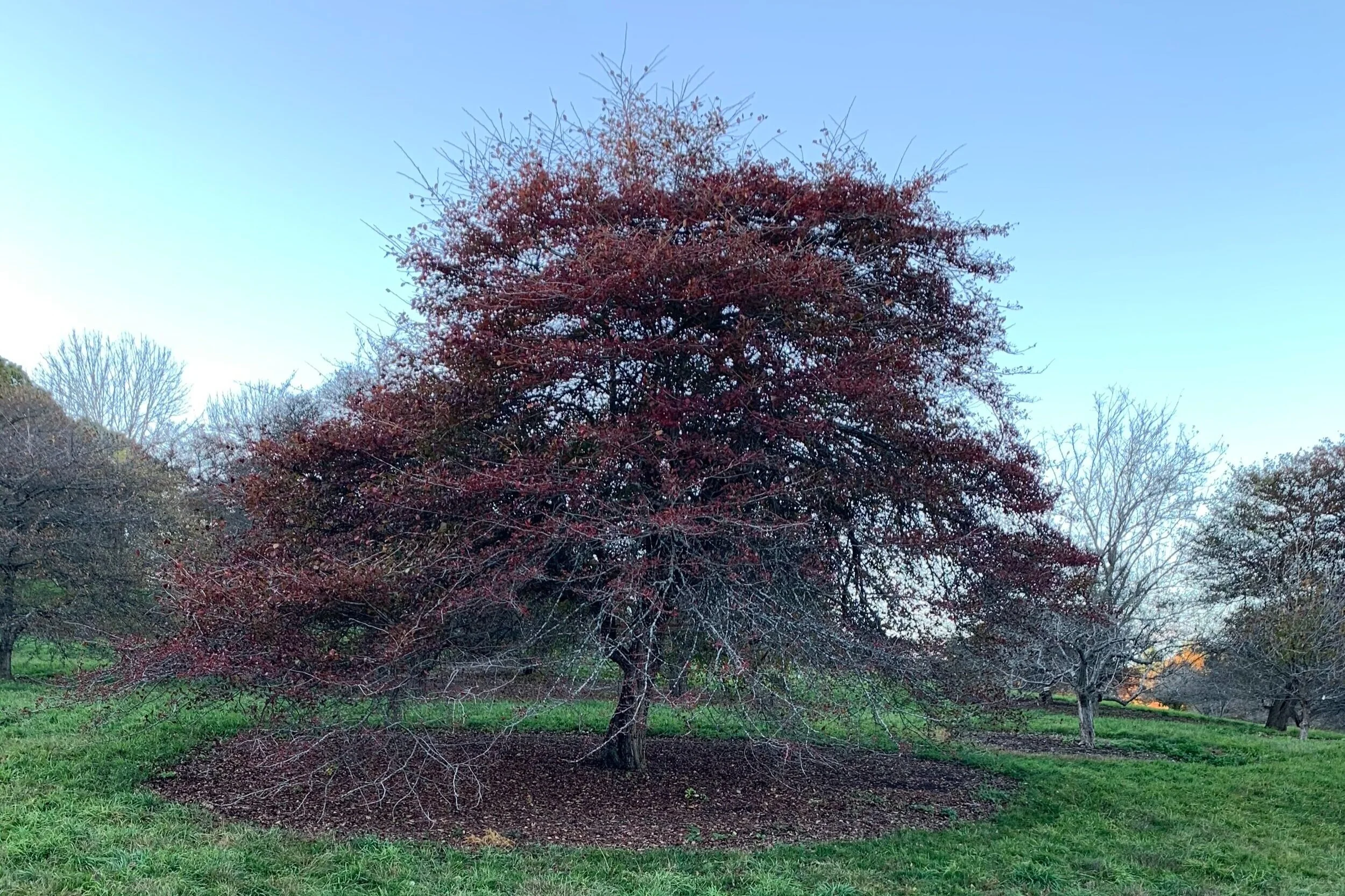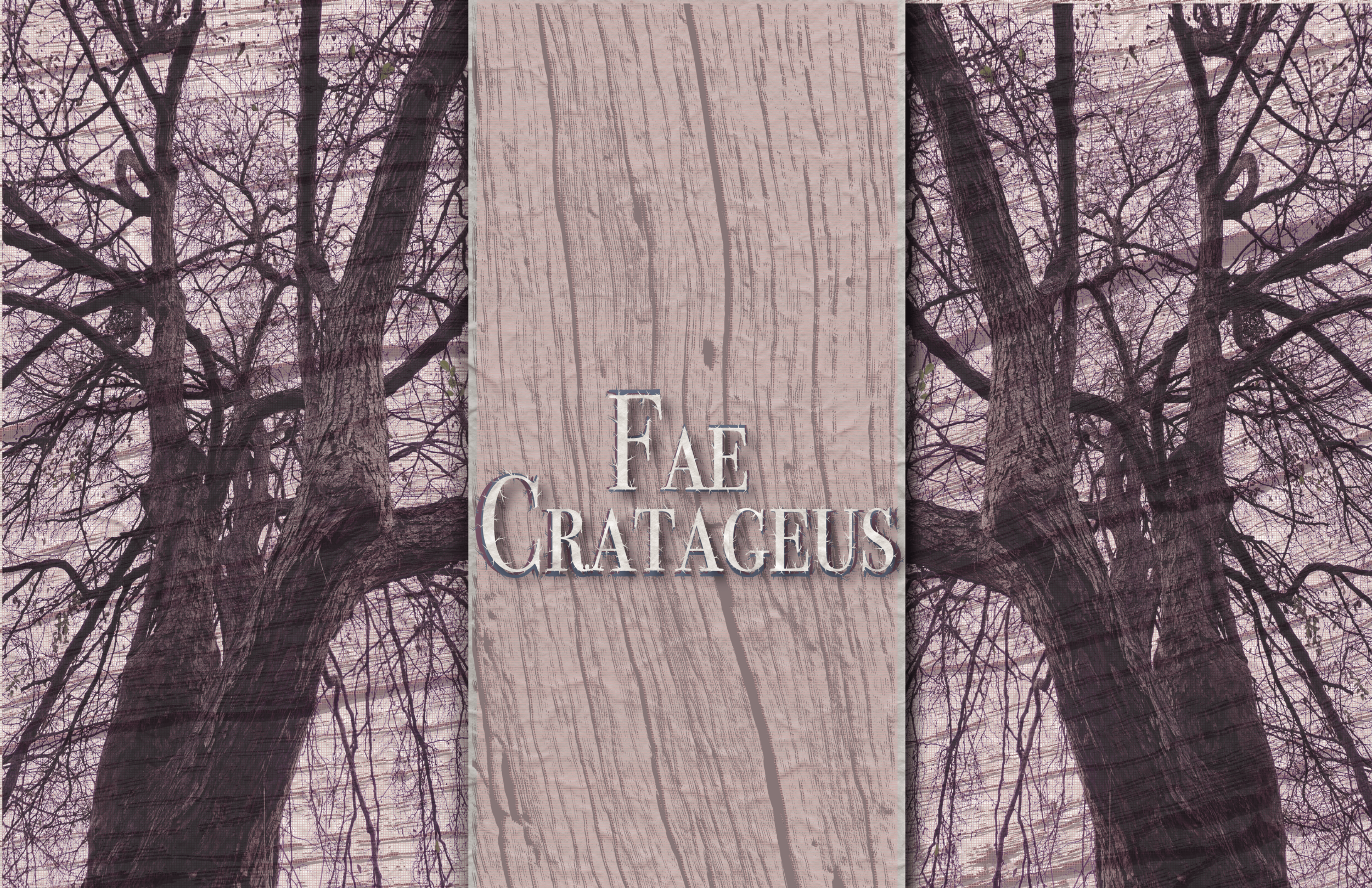
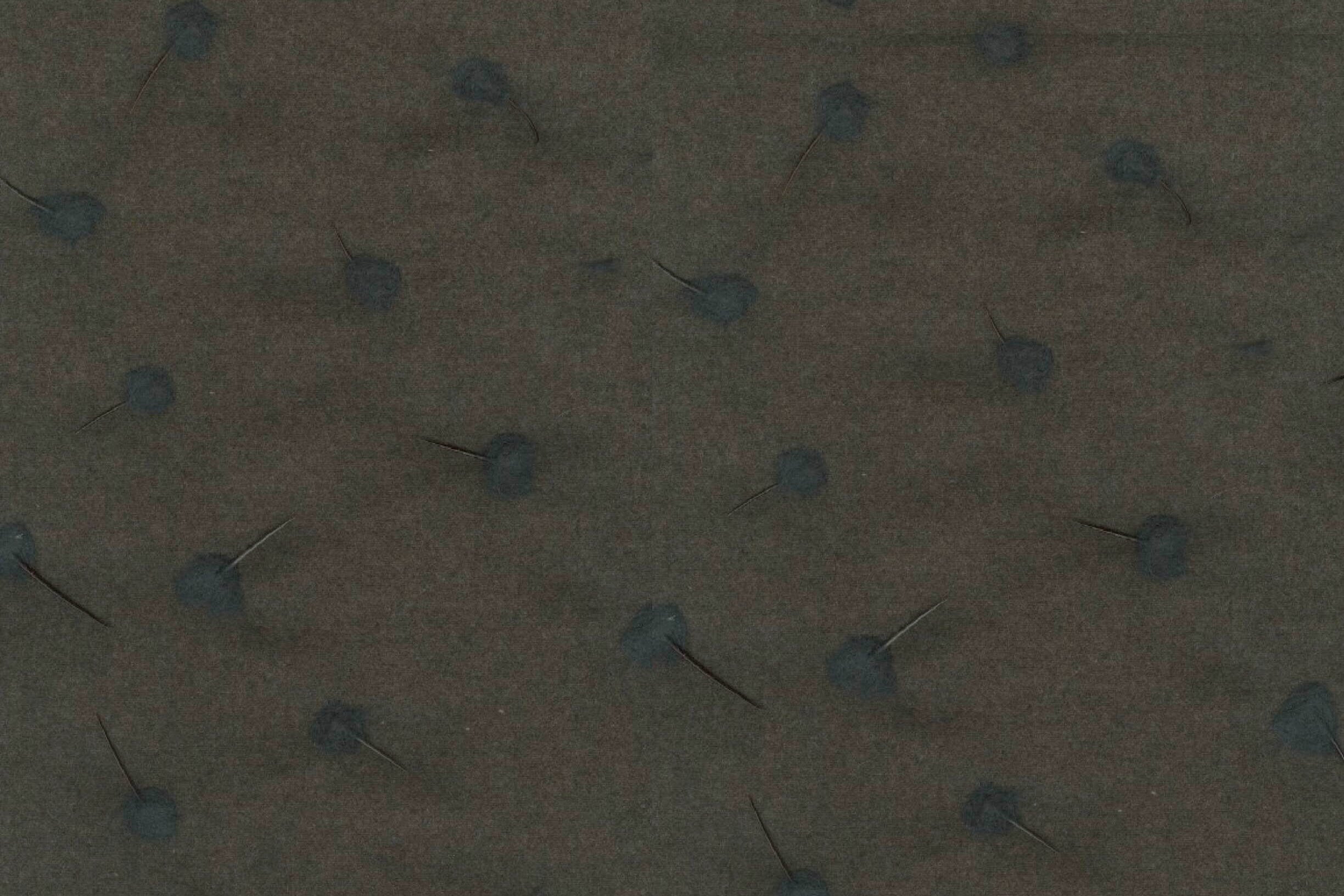

An exploration of fantasy, escapism, and the beauty of that which goes unnoticed.
This collection explores these elements by delving into the mythology of the Hawthorn Tree and the faeries said to live in them. Faeries carry a dark mythology in the British Isles, abducting tricking and cursing humans when they mess with their precious Hawthorn trees. There is one myth in particular that inspired this collection: that if you fall asleep under a Hawthorn, you could be stolen away to the world of the faeries. I wanted to focus on the beauty and violence of these thorny trees, how you could be violently ripped away from the world you know, and the way the faeries translate the wood into dark beauty.

Process
I wanted to incorporate the thorns of the Hawthorn into a textile so that the thorns would protrude and snag the layers of tulle, and discovered I could achieve this effect by needle felting the base of the thorns. I used this technique to create the drop scatter pattern of Look 1, and expanded it to use large twigs to create the branch pattern of Look 2. I added the layers of tulle to give a touch of femininity, and shredded the tulle garments demonstrate the violence of these trees. This was also my first attempt using digital collage to render my illustrations, using scans of my textiles to fill my sketches, and with found images for models.
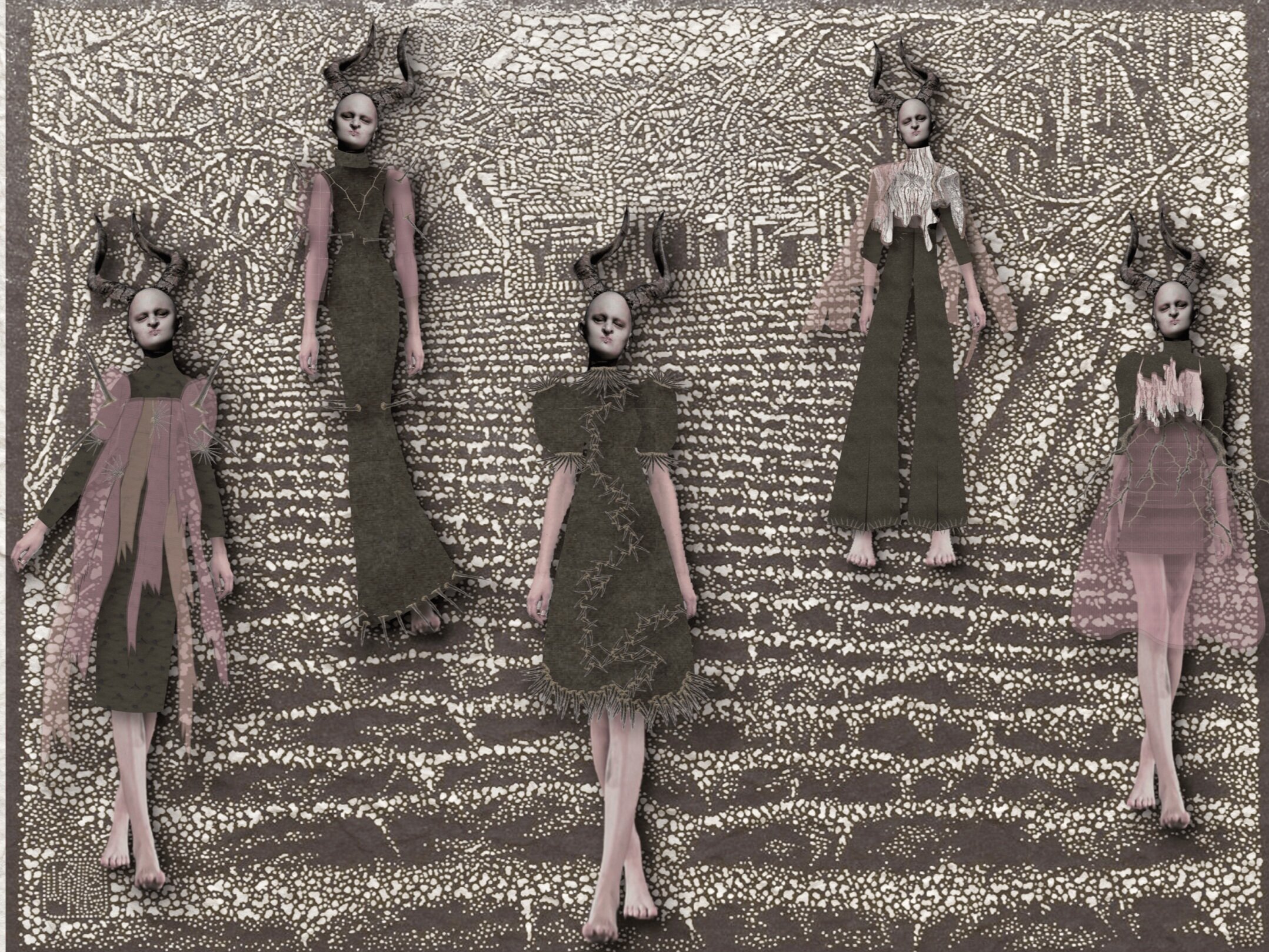
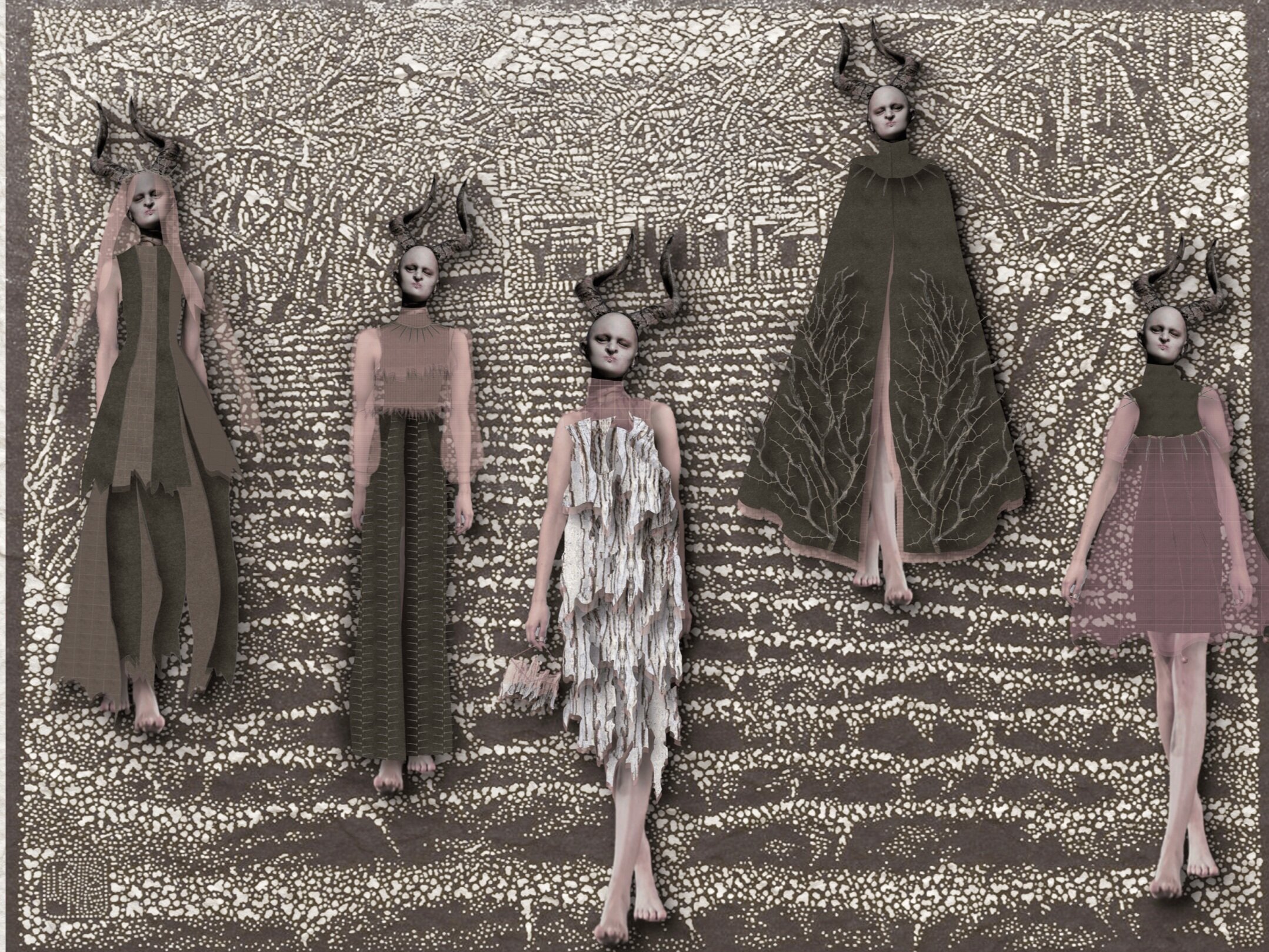
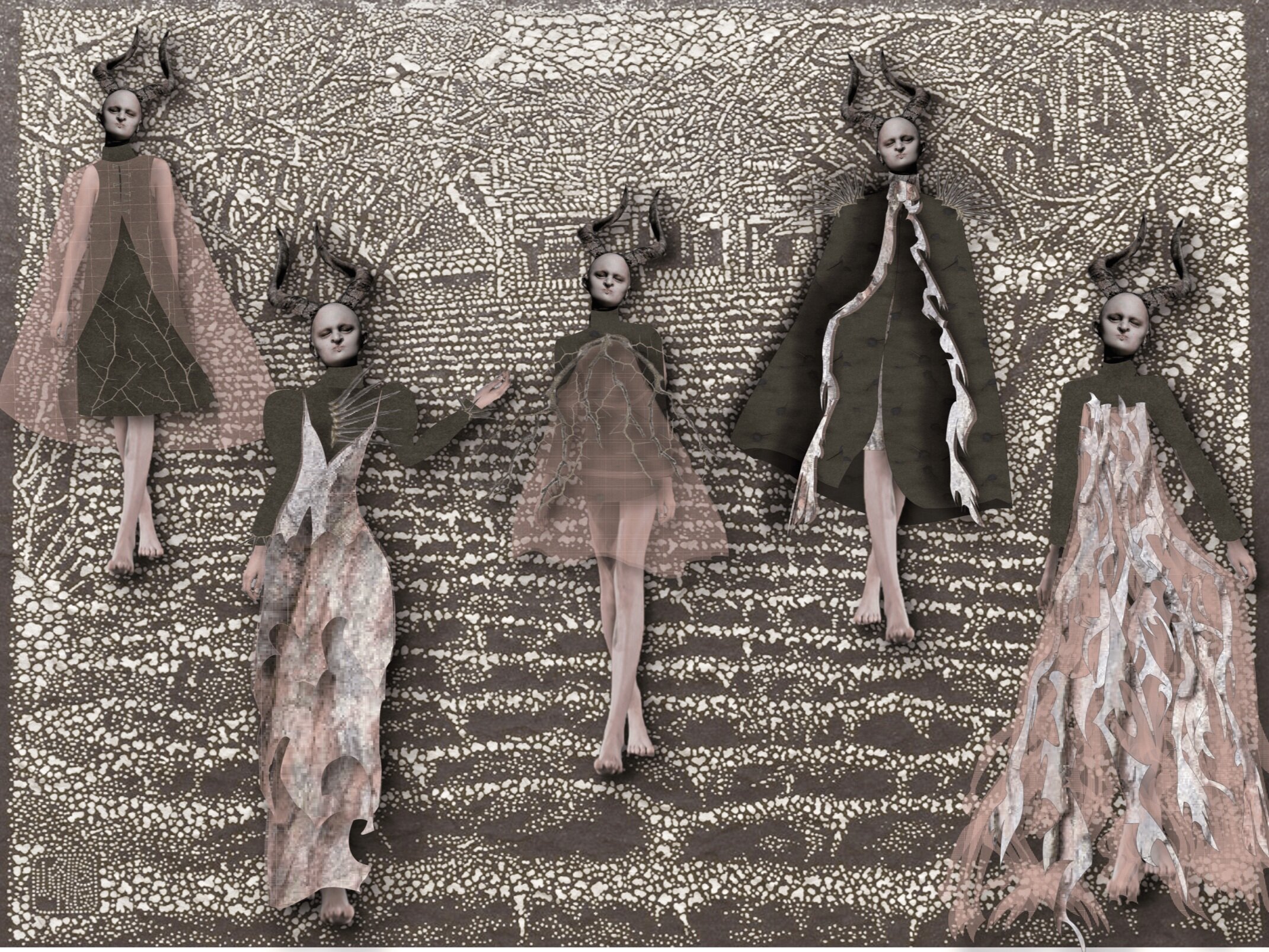
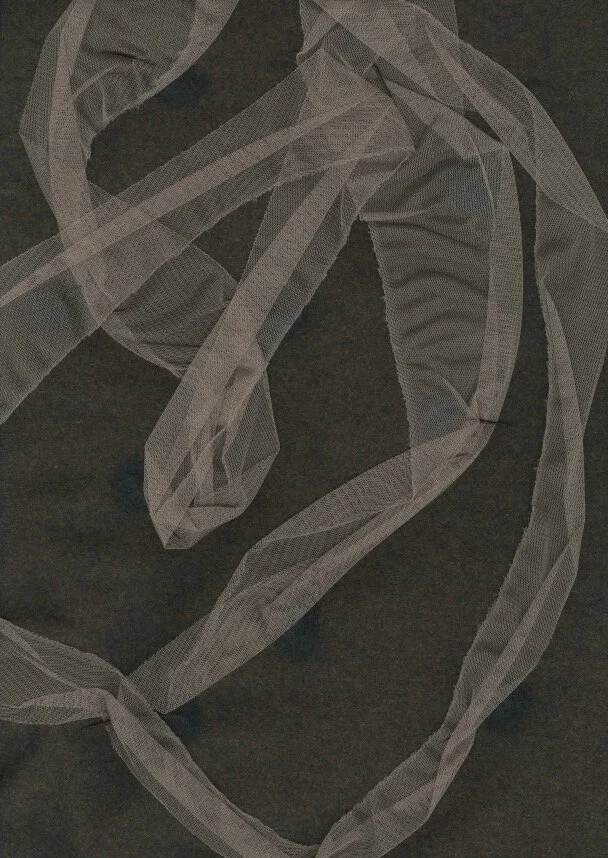
Mythology of the Hawthorn tree
Hawthorn trees have a strong connection with the supernatural, surrounded by mythology and folklore. Pagan tradition and folklore has maintained these myths of the Hawthorn being dangerous and to be avoided, except for one window of time in early May when the trees are in bloom. Hawthorn trees are also called May Trees, and are strongly associated with the early Summer holiday Beltane in the British Isles. The traditions of decorating and celebrating these trees is a remnant of pagan tree worship. Whole towns and villages adorn these unlucky trees with ornaments, flowers, candles, and ribbon and gather to celebrate the beginning of Summer.
During Beltane, pilgrimages to “clootie wells” are common. At these wells, pilgrims dip a strip of cloth or fabric into the well in supplication to the saint or spirit of the well, often as a healing ceremony. The rags are then hung on the branches of the neighboring tree, often a Hawthorn. Beltane is the only time it is acceptable to cut, uproot, or interact with a Hawthorn without risking bad luck. To this day myths abound of mysterious tragic events occurring when a Hawthorn is uprooted. One such myth is when a man was felling a Hawthorn tree, hundreds of pure white mice ran out of the tree and spooked the man’s horse, who moments later crushed the man to death. The commonly held belief is that those mice were actually faeries, inflicting misfortune on the man who felled their tree. Hawthorn trees are considered the entrance to the otherworld, the realm of faeries. The bad luck associated with the trees is commonly attributed to the fair folk.









